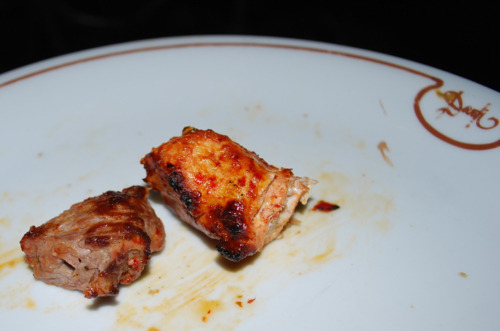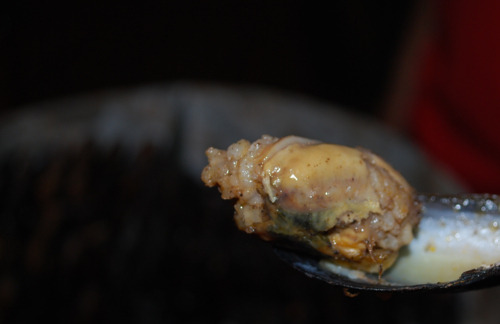Two years ago I made some predictions of what’s coming in the next five years (just for fun). While going through older posts, I found my predictions and thought it’d fun to see if any has come true.
(2014) Ease of life
Technology will continue to make life easier. Very soon when we sit down in our car at 6pm, the car will know we are about to go home. It calculates the best route based on real time traffic conditions. If the traffic is bad, the car may suggest we do our grocery shopping before heading back. The car “talks” with our smart phones. Our phone keeps our shopping list and “tells” the car which store we need to go to. If our calendar shows we have a dinner appointment, our car knows immediately when we sit in front of the steering wheel and will route accordingly. Want to do something fun instead of being stuck in traffic? Our phone suggests a few interesting events going on in our proximity. The car will then pick up the route.
All these data exit today, in separate places. For our lives to be wrapped in a seamless information net, the data needs to be connected to create intelligence. Doing so will require two things.
- The devices talk to each other. The Internet of things.
- The data sync. It’s not necessarily big in volume, but can be diversified in types.
We still waste a lot of time every day by doing tasks separately. We used to go to specific stores to buy certain things. Grocery shopping in grocery stores, pharmacy in pharmacies, books in bookstores. Now most of the “operational” shopping (shopping needed to sustain our living) can be done online. I am very close to ordering toilet paper on Amazon. The rest of bathroom supplies are already from them. Brick and mortar stores will become even more specialized to provide the deep domain knowledge which can be consumed more pleasantly during face to face interactions. Think of wine, cheese, farmers’ market, clothing store that does styling…
(2016) We are not there yet. But I continue to believe the life “assisted” by AI will come soon.
(2014) Meet-ups
With the time saved, we have more time to play. Very soon people will get tired of mass reaching, surface scratching, sentence reading online social interactions and long for the real face to face one. Meet-up will continue to do well but will become smarter in creating and suggesting activities. People will feel ok to interact with strangers when the right atmosphere is created. You don’t have to be a super extrovert for that initial hi to happen.
(2016) Social media still rules. Even more formats and channels are created. But, I did join Eventbrite, an online marketplace for offline experience. True to my own prediction ;).
Transportation
Considering how much time we spend on getting from place to place, the traffic is an inevitable candidate for the next wave of innovation. The challenge can be solved by either building smarter mass transportation or enhancing the efficiency of individual transportation. A smarter mass transportation will be faster, cleaner and more predictable. It will address the other annoying parts of not driving as well such as waiting time. Stations need to be redesigned. They are the perfect venue for human interactions, for utilizing the small chucks of time (e.g. grocery shopping). I have seen some of such stations in Europe and China. I can only imagine US does even a better job. Efficiency in individual transportation relies on minimizing the human error and averaging out the different levels of driving competency. Self-driving cars seem to be an obvious answer. However, those who drive more inefficiently, not to stereotype, tend to be late adopters of newer technology. The whole system won’t improve significantly if only the already efficient becomes more so. There has to be huge incentives for less efficient drivers and cars to change. Just for the love of new technology won’t do. Maybe it’s a better designed car that is actually cheaper than what we own now. We do not have to pay the hefty price to be included in the technical advancement. After all, the whole society moves forward when even the bottom is lifted. Lifting the top is artificial.
(2016) I so wish this would have come true! For the past 15 months I have been commuting on Caltrain. I am also holding off buying a new car until the self-driving car hits mass market. Can’t wait to be driven by no one!
(2014) Health
The problem of the lack of health in some populations in the developed countries is not due to denied access to modern medical technology. People just don’t have interesting physical things to do. Not everyone cares whether they look fabulously thin. But everyone wants to do things that make them happy. Software is not going to solve that problem. Again it’s going to solve the problem for people already have the incentive and just need an organizer app. The real challenge is how to persuade an overweight single mom to exercise. Conditions for that to happen may not include downloading an app (and the prerequisite of owning a smartphone). She has to have the time. Her baby needs to be taken care of while she exercises. She needs places to do so. She needs a better diet. She needs a support network to provide mental reward. Addressing these issues of a less financially capable group may not make an entrepreneur rich fast. And it is not a challenge assigned only to social entrepreneurs.
(2016) I still find gym boring. Running is great. But the gym is boring ;).
The abundance of things
At some point the financial market will realize the ever-increasing appetite for growth rate is a fiction. Companies’ growth leads to the increasing supply of goods and services. The only way for the supply to become profit is through consumption. Everyone, in developed countries, emerging markets and poor nations, needs to buy more. This also means we need to get rid of what we already own and make room for the newer and shinier. We recycle, export to less developed countries (old Chinese cars in Lima), or hand down (Goodwill). Getting rid of things will become a business of its own. If the things we build today are meant to be replaced in just a few years, our rooms will fill up quickly. Eventually the total society cost of taking the old away, apart and making them disappear could even be more costly than producing new.
(2016) That’s some deep thinking!
(2014) Still exciting
This feels, once again, the verge of some fundamental changes. Web is the last wave I’ve observed. Elements for the next one are in the making. They are moving toward each other. There will be brilliant thinkers to connect the dots in ways previously unthought-of. There will be fortune-changing money moving into the direction. So many times, knowledge is not about creating new notions; it is about reinterpreting what’s already there and connecting the existing dots. So are innovations.
(2016) Still excited!





















